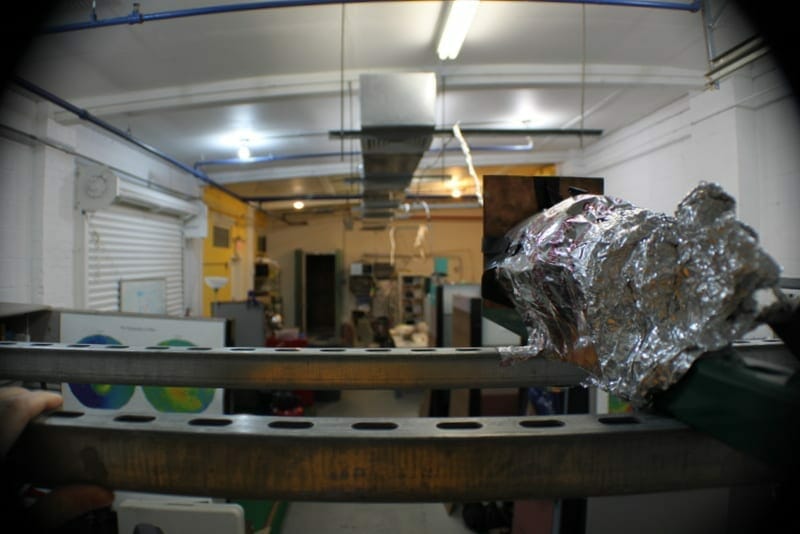New data archive reveals 4 billion-degree electrons
In December, LPP compiled a data archive covering the first two years of operation of FoFu-1, from October 2009 to October 2011. Preliminary analysis of this data has revealed that at least for a 30-shot series in September-October 2011, electrons were being consistently heated to above 400 keV (4 billion degrees C), more than twice as hot as the ions in our hottest shots. (FLASHBACK: Find discussions of ion energy earlier in 2010 here). X-rays from such super-hot plasma can be used for LPP’s spin off technology, X-Scan, for non-destructive scanning.
Earlier in the fall of 2011 we had performed experiments to measure the spectrum of the x-rays. We know that the more energetic the x-rays we have, the hotter the electrons that must have produced them. On Sept 27-Oct 5, we had placed an additional filter in front of the NTF, so it had 6 mm of total copper thickness, while the FTF, Far Time of-flight, continued to have the 3 mm thick filter. The copper filter acts on the x-rays the way a colored glass filter acts on light, blocking less energetic x-rays and allowing more energetic ones to pass. Just as a glass filter that blocked red light and allowed blue to pass would show a brightening as a metal rod was heated from red-hot to white hot, the 6mm copper filter allows us to measure how “hot” (that is, energetic) the x-rays are. We can do this by comparing the amount of x-rays that pass through the 6 mm filter with those that only pass the 3 mm one. Now that we have the archive and the calibration curve, we can go back and compare these 30 shots taken when the NTF and FTF had different filters with those taken when both devices had the same filter.

The Near Time-of-Flight detector, with its protective aluminum foil (for noise reduction) peeled back and its second of two copper filters temporarily detached. Because the second filter did not affect the x-ray signal, the x-rays must have had a lot of energy to blast through the extra copper.
We found that no significant difference in the ratio of the NTF to FTF signals occurred because of the filter. The x-rays were acting as if the 3 mm copper was transparent. This could only be the case if the x-rays were produced by electrons that had an average energy of at least 400 keV. We will keen to analyze in even greater detail results relative to the electron temperature, which is crucial for in turn heating the ions and thus overall fusion yield. Thanks to LPP’s IT Consultant, Ivana Karamitsos, for archiving, software tweaks, and data analysis collaboration!

The Far Time-of-Flight detector, peering from the office area of the lab through its single copper filter, through the exit holes of the experimental chamber, through the beryllium window of the vacuum chamber (transparent to x-rays), all the way (during an experiment) to the x-ray source: FoFu-1’s hot plasmoid.
